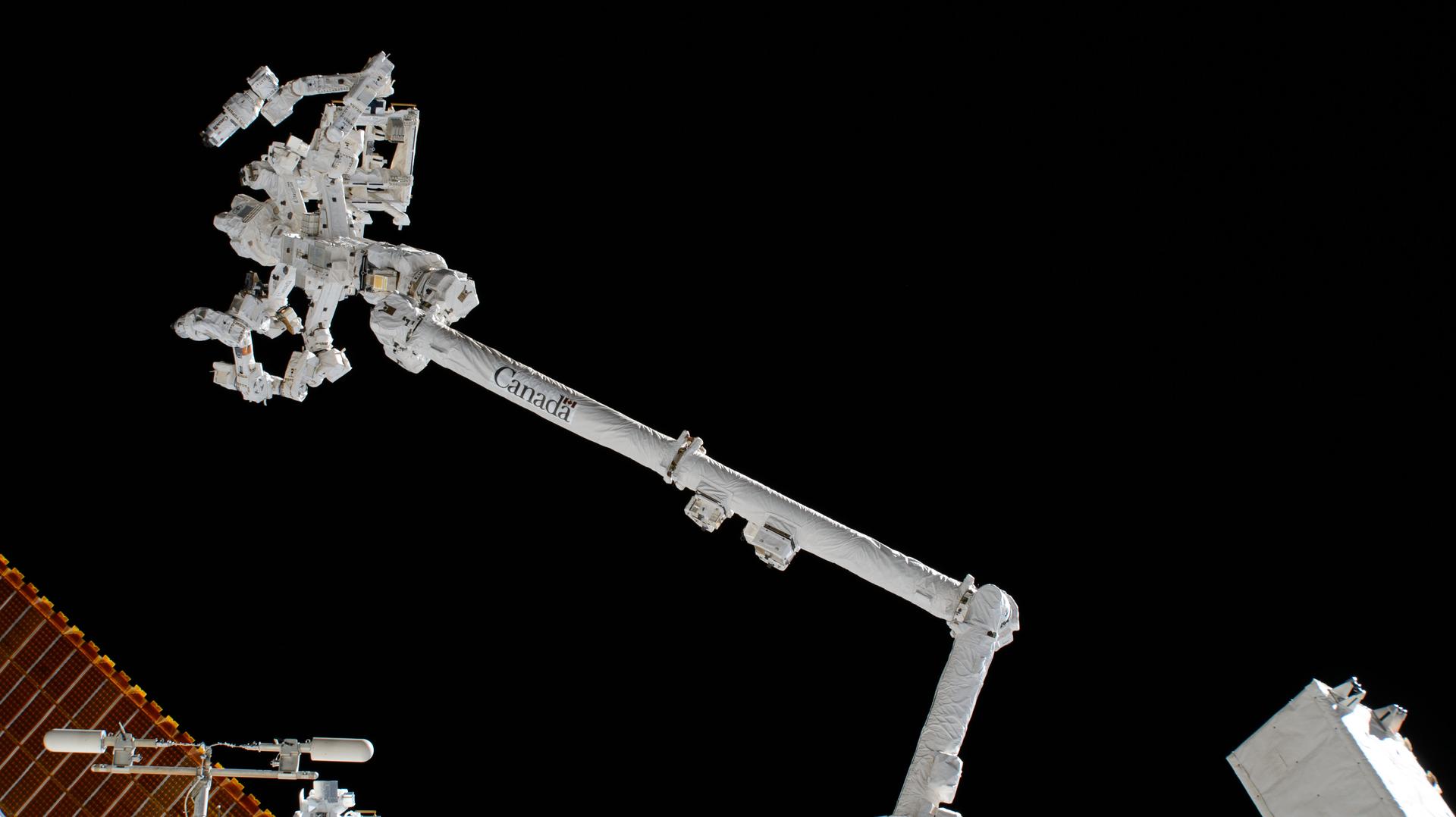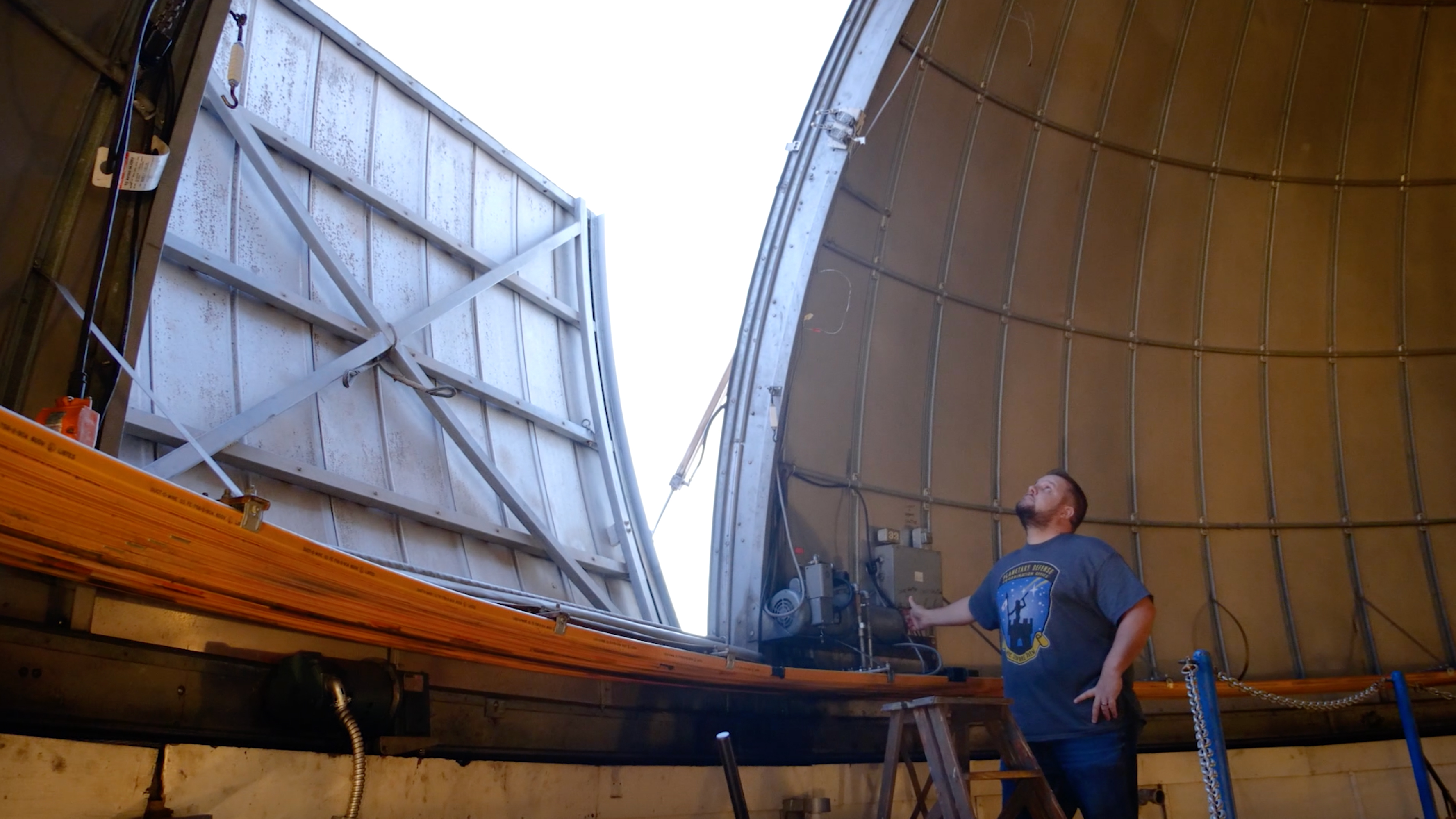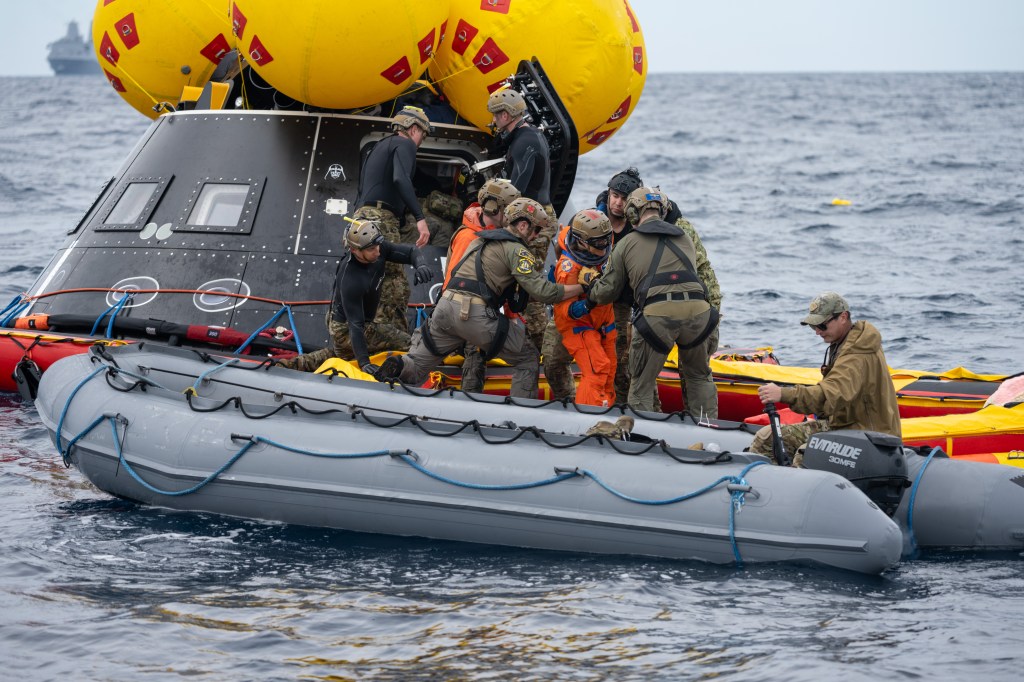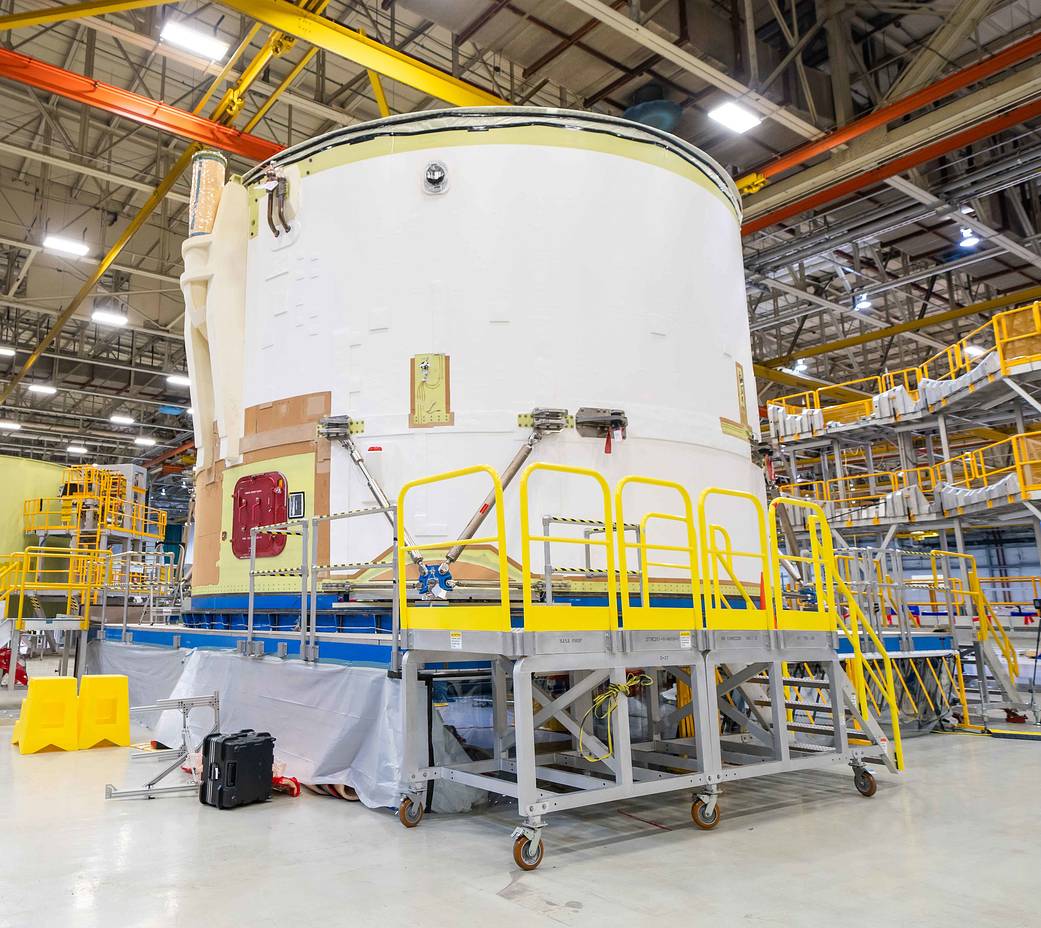NASA and Boeing have completed the majority of outfitting for the core stage engine section for the first flight of the agency’s new Space Launch System (SLS) rocket. The engine section, located at the bottom of the 212-foot-tall core stage, is one of the most complex parts of the rocket. Technicians at NASA’s Michoud Assembly Facility in New Orleans have installed more than 500 sensors, 18 miles of cables, and numerous other critical systems for mounting, controlling and delivering fuel to the rocket’s four RS-25 engines.
The core stage tanks hold cryogenic liquid hydrogen and liquid oxygen that are combusted by the engines to produce 2 million pounds of thrust to help send SLS to space for missions to the Moon. On the exterior of the engine section, technicians attached cork insulation for thermal protection and painted it white as well as finishing up other systems including fittings where solid rocket boosters attach.
Next, NASA and Boeing, the SLS prime contractor, will add the boat-tail to the bottom of the engine section and finish up some outfitting, integration and avionics functional testing. The boat-tail is an extension that fits on the end of the engine section. The engines are inserted through openings in the boat-tail, which acts much like a fairing to cover and protect most of engines’ critical systems.
The engines are mounted inside the engine section, and only the RS-25 engine nozzles extend outside the boat-tail. The team is using lessons learned building and outfitting the engine section for the first integrated flight of SLS to accelerate outfitting of the engine section for the second SLS mission. The primary structure of the core stage engine section for the second SLS flight has been built and covered with primer as it prepares for its outfitting and is visible in this image, just behind the first engine section.
Image Credit: (NASA/Jude Guidry)




























